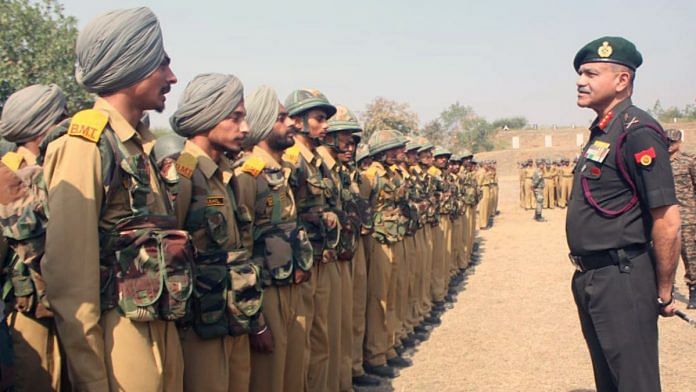The first batch of Agniveers enrolled under the Agnipath Scheme commenced training at the various recruit training institutions of the Armed Forces last month. Understandably, it will take a couple of years for the Armed Forces to crystallise the modifications required in the original scheme.
During this period, two areas that would require a higher focus are the initial recruitment process and the recruit training.
The Army has already changed the recruitment process for the second batch by making the online exam the first step of the process. It is followed by physical fitness/measurement and medical tests. Earlier, the written exam that was conducted physically was the last step. This change will certainly reduce the overall administrative burden.
The Common Entrance Exam (CEE) will be followed by recruitment rallies for shortlisted candidates at locations decided by the Army Recruitment Offices (AROs). This is a major step towards Digital India though it took the Agnipath Scheme to give the recruitment reform a shot in the arm.
Also Read: Who should call the shots in a theatre command—Air Force, Army, Navy? Let the context decide
Dilution of merit
The CEE being conducted at the all-India level does not mean that the selection is based on all-India merit. The Army vacancies are still tied geographically to ratios based on Recruitable Male Population (RMP). Therefore applicants belonging to the Indo-Gangetic belt, where the bulk of our population resides will be advantaged over places with lower population density.
Merit, the principle that should really count, is diluted in that many Indians are denied equal opportunity.
Agnipath Scheme provides the long term pathway to convert Regiments that still hold on to a British Legacy. Therefore in about 15-20 years, this conversion to an All India Class could happen even though they might retain the names like Sikh, Kumaon, Madras and so on. Having served in the Brigade of Guards, I am convinced that units come to harbour greater strength when Indians are mixed, their narrow identities submerged and nationalistic outlook fostered. In essence, the Army will get recruits who do not privilege narrow identities and it will promote equal opportunity. The Navy and the IAF select their recruits on All India Merit and the Army should not be an exception.
Rewards for poor performance
No doubt the switch away from RMP has political implications and would be seen negatively, especially by states in the Indo-Gangetic belt. However, when viewed within the long-term national population policy, there is no reason to disadvantage states that have done better in reducing the growth of population.
A similar argument can be made in the case of the impending political delimitation exercise scheduled for 2026. The total number of parliamentary and state assembly seats in each state has remained unaltered since the 1971 census, though boundaries have been redrawn to equate populations across constituencies wherever possible. By constitutional requirement, in 2026, India will need to re-structure the current allocation of seats taking the latest population census, 2021, as the base.
This will lead to a change in the mix of legislators between the southern and northern states. Given the evolution of demography and fertility across states and the relative success of family planning in the south, the north stands to benefit in terms of the number of seats. This issue holds the potential for friction.
Both matters have to be politically managed and negotiated but poor performance in governance should not be turned into an advantage.
Also Read: Yangtse showed Army capability but it’s Navy that can shift balance of power in India’s favour
The human spirit
The initial reports about Agniveers from the Army’s training centres seem positive and promising, especially in terms of what ultimately matters in military effectiveness — the human spirit.
This problem can be mitigated if the ministries, especially the home ministry, offer to absorb them through a competitive process that also takes into account their four years of service. There is no reason except turf protection to not utilise the skill sets of the Agniveers in the government. Only the PMO can make this happen. Private and corporate institutions have supported the absorption of the Agniveers, but time will tell whether promises are delivered.
The Agnipath Scheme, with all its known negative aspects, offers the only hope of reducing the burgeoning pension outlay that is choking the defence budget as global geopolitical frictions are mounting. It must succeed even as it forgoes some of the advantages of a standing military. It must be a whole-of-government approach all the way.
Human capital is the ultimate weapon of the Armed Forces. Our system of selection and retention must be based on merit and not on narrow identities of ethnicity and religion. The Agnipath Scheme which in reality was stewarded by the PMO can turn out to be a long-term game changer, especially in a world that is on a slippery slope to war — we will have our reserves ready.
Lt Gen (Dr) Prakash Menon (retd) is Director, Strategic Studies Programme, Takshashila Institution; former military adviser, National Security Council Secretariat. He tweets @prakashmenon51. Views are personal.
(Edited by Theres Sudeep)






